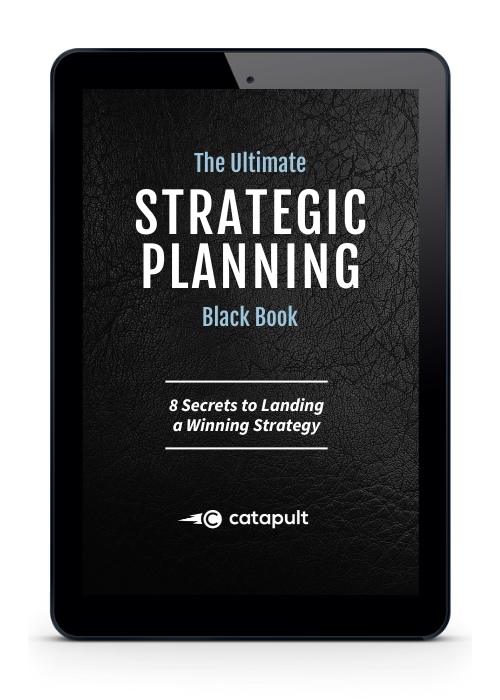Despite best efforts of nonprofit leaders, many times a strategic plan fails to deliver the goods. It’s hard enough to get a gifted and capable team to align around a plan, so there are very few things more frustrating for a leader on an Executive Team than when the...

5 Mistakes Nonprofits Make When Hiring a Consultant
In the complex world of nonprofits, hiring a consultant can feel like trying to figure out how to summon a wizard to solve your organization’s most pressing challenges. While consultants possess a particular expertise, nonprofits can sometimes stumble into avoidable mistakes during the process of hiring a consultant for strategic planning, fundraising development, board development, marketing funnels, etc.
We want to help you think about how to avoid these common mistakes. So for your reading pleasure, let’s take a bit of a lighthearted approach through the five (sometimes entertaining and yet very real) mistakes nonprofits tend to make when hiring a consultant.
1. The “Mysterious Expectations” Mistake:
Nonprofits can often fail to clarify their expectations with consultants. This creates a mysterious and suspenseful atmosphere akin to a Sherlock Holmes mystery. The consultant arrives not knowing if they are expected to perform a grand transformation or merely provide advice. To avoid this blunder, it is helpful for nonprofits to communicate their goals and desired outcomes as clearly as possible. A little transparency can prevent the plot twists that come from mismatched expectations.
Pro Tip:
A good nonprofit consultant can help you figure out exactly what you need before a proposal is ever created because they should be looking to rightsize their services with your needs.
2. The “Magic Bullet” Mistake:
Every once in a while we come across a CEO or Executive Director who believes that a consultant possesses something like a magic wand that can instantly solve their problems. They hope to see immediate results, like a rabbit pulled from a hat. While consultants sometimes think more of themselves than they should, they are certainly not magicians. Real change; deep change; lasting change takes time. Avoid this blunder by setting realistic timelines and understanding that meaningful progress often involves multiple phases.
Pro Tip:
Make sure you are including change management planning into whatever deliverables you are discussing (including timelines and KPIs). You should know when to expect results and the actionable tactics you will need to get there.
3. The “Budgetary Blindspot” Mistake:
Imagine trying to purchase a new Tesla but only budgeting for a Honda Civic. This is similar to the mistake some nonprofits make when looking to bring in a strategic outsider: they attempt to hire a world class consultant on a shoestring budget. To avoid this pitfall, budget realistically for consultant fees and allocate resources accordingly. After all, even “wizards” require compensation.
Pro Tip:
We tend to do our best work with medium-sized-to-larger nonprofits. When you are gathering information from potential consultancies, get a sense of their sweet spot so you are matching your dollars with the firepower you need.
4. The “One-Size-Fits-All” Mistake:
Nonprofits occasionally believe that a consultant who worked wonders for another organization will automatically work miracles for them. It is akin to assuming that Harry Potter’s wand will work perfectly for everyone or attempting a blood transfusion with a mismatched blood type. Every nonprofit is unique and the process or solution for one organization will not work for all.
Pro Tip:
When you are in the proposal phase, be sure to tailor the consultant’s role, strategies and process to your organization’s specific needs and culture. Be as specific as you can about your uniqueness, what your culture feels like and previous experiences with outside strategic advisors.
5. The “DIY Detour” Mistake:
Sometimes nonprofits hire a consultant but then attempt to micromanage the entire process. This is like hiring a tour guide and then insisting on driving the bus yourself. Overtaking the consultant restricts their expertise and threatens to derail the process altogether. Relax and trust the consultant’s guidance and let them lead while actively participating in the process.
Pro Tip:
Build trust early, even before a contract is signed. You want to have confidence that the person you are hiring is not only able to be the expert “in the room” but has the attention to detail needed to skillfully manage the process. Ask them to show you how management happens so that when it comes time to release control, you have made an informed decision.
Final Thoughts
In the pressure-filled world of nonprofits, hiring a consultant can be a challenging adventure that involves suspense and potential pitfalls. However, by avoiding these common mistakes nonprofits can ensure a smoother journey toward their goals and moving their mission forward.
Remember, consultants are not magicians but with the right partnership and approach they can certainly help nonprofits create their own magic in the world of social change. So, embrace the consultant’s expertise, avoid these mistakes, and watch your nonprofit flourish with a touch of professional wizardry!
Ready to design your own winning strategy?
Catapult’s published The Ultimate Strategic Planning Black Book to help nonprofits like yours take the first steps towards developing a rock-solid strategic plan. Join our email list to get the guide now.



